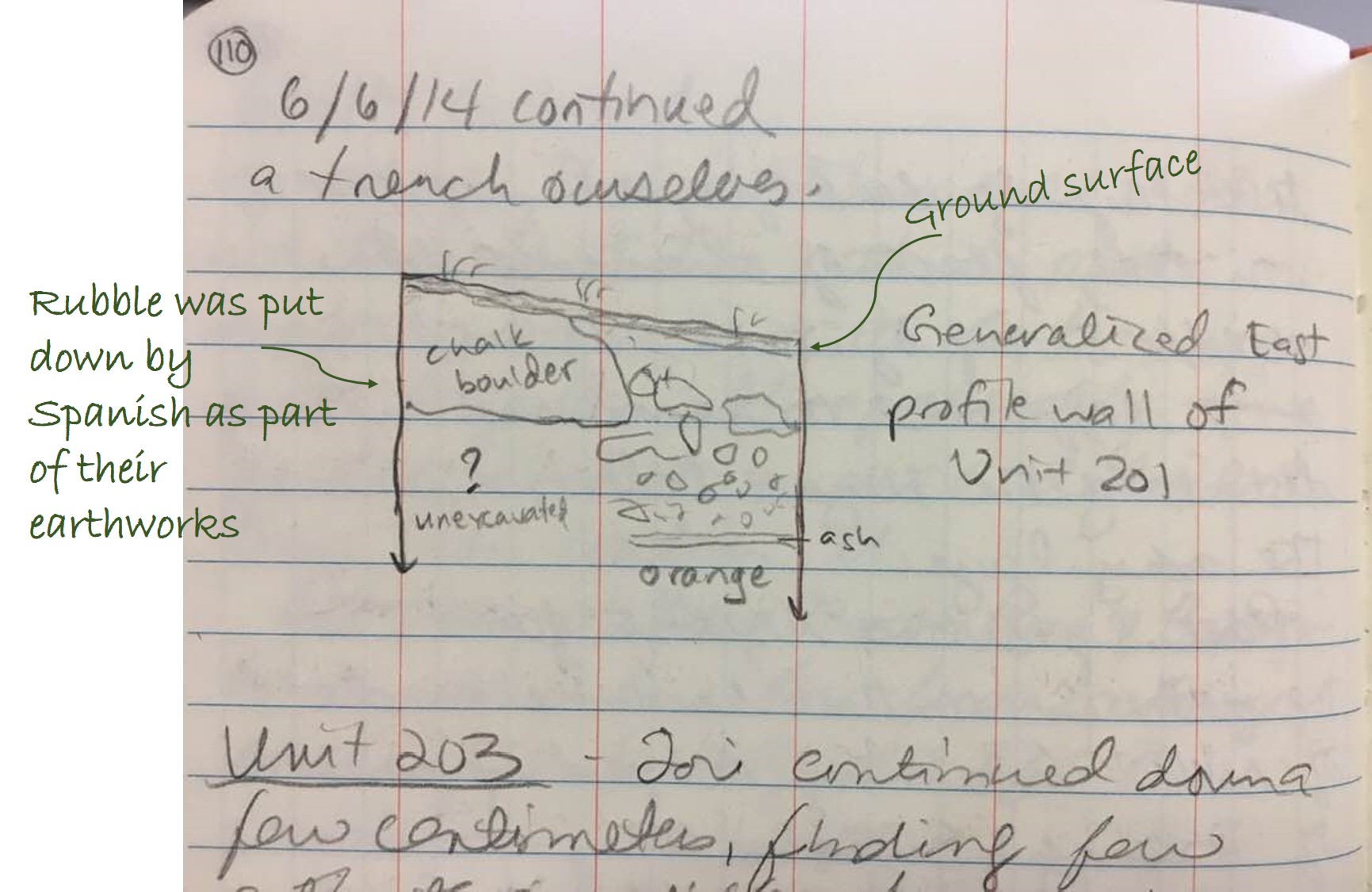Field blog for October 23 and 25by Ashley Dumas
With apologies to Indiana Jones fans, this was a bit of a dull week, which sometimes happens in archaeology. On the 23rd, Connor (Sparky) continued to familiarize himself with Unit 201 by reading all of the field notes made by Lee Reissig, the student who excavated here in 2014. Lee dug through the upper layer of earth and chalk rubble from the earthworks built by the Spanish in 1794. Underneath he found a layer of orangey ash, mortar, and lots of nails, which we suspect may have been caused by the barracks burning in the 1760's during or after the English occupied the fort. Underneath that layer was a mixture of brown clays with many artifacts, including nails, ceramics, a gunflint, and all sorts of items indicating this was a midden (trash) layer associated with people living in the barracks. Near the end of the 2014 dig, he found portions of a large platter (see last week's blog post). Sparky must now finish the excavations down to the chalk bedrock if possible. Below is a sketch that was made in the field book in 2014 as we were beginning to decipher what this unit was telling us.

Michael has also been tasked with completing a unit that was left unfinished in 2014. Located underneath where we believe the barracks to have been, Unit 204 had a midden rich with artifacts on the surface but then a layer of clay slowed progress and it was ultimately left incomplete. So far, Michael is learning just how unpleasant it can be to excavated clay. To this point, we screen all dirt from this area through 1/16" screen (window screen) to catch the tiniest of artifacts, but the clay may require a new approach or make this impractical altogether.
It rained on Thursday, so we spent the day in the laboratory washing artifacts and screening dirt.